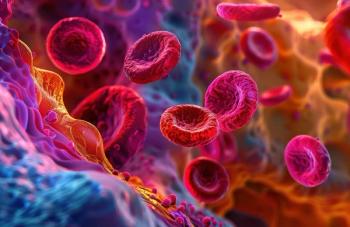
Cutting Sugary Drink Sales by 20% Through Education, Not a Tax
The results from a wide-ranging public health effort in Howard County, Maryland, show a decline in sugary beverage consumption nearly on par with early results from Berkeley, California, which passed the nation's first soda tax.
A comprehensive public health campaign did nearly as much to curb sugary beverage consumption in one Maryland County as the nation’s first soda tax, according to findings presented Sunday at the 2016 Scientific Sessions of the American Heart Association in New Orleans, Louisiana.
The study, a joint effort by the University of Connecticut’s Rudd Center on Food Policy and Obesity, Johns Hopkins University, and the Horizon Foundation, showed the fruits of the first 2 years of the campaign, which combined advertising, education, and ordinances to limit access to soda and unhealthy food on public property, like schools and parks.
The new study found sugary drink sales dropped nearly 20% from 2012 through 2014, after the broad-based public health campaign took hold in Howard County, Maryland, which is located between Baltimore and Rockville. Most of the drop occurred in the first 12 months, according to results presented during a poster session.
By contrast, Berkeley’s 1-cent per ounce soda tax has produced a 21% decline in soda purchases and a 63% increase in water consumption, according to results published in October in the American Journal of Public Health. On
Marlene B. Schwartz, PhD, director of the Rudd Center, said in an interview with The American Journal of Managed Care that the effort in Howard County was not easy or cheap—it cost about $800,000 a year, and it met resistance from many groups, such as youth sports teams that relied on concession stand revenue. But she agreed that the results show there are multiple ways to move children away from drinking soda; Howard County, in fact, may combine its current campaign with a soda tax to further curb consumption.
“This study shows that a public health campaign combining community-wide education, policy changes and culture-shifting efforts can significantly reduce sugary drink sales,” Schwartz said in a
Public health officials in the United States and abroad have looked to curb consumption of soda and other sugary drinks as a way to combat obesity, especially in children. The World Health Organization has called for soda taxes and marketing curbs to halt the rise in diabetes and obesity. A
The study examined actual retail sales receipts from community supermarkets from 2012, before the campaign began, and from early 2015. It’s the first time such an objective measure of sugary drink consumption has been tried to measure a community education campaign, the researchers said. They found:
· Sugar-sweetened soda sales fell by almost 20% by volume in Howard County, but were stable in a matched set of 17 stores in Southeastern Pennsylvania.
· Sales of fruit-flavored beverages with added sugars fell about 15%.
· Sales of fruit juice fell 15%.
The “Howard County Unsweetened” campaign included ads on television, social media, online ad buys, and direct consumer education. Marketers appeared at community events, health fairs, sporting events, and engaged the area’s health professionals to talk directly with at-risk patients about the harms of sugary drinks. The media buys created 17 million impressions from 2013 to 2015, and the digital campaign generated 160,000 page views, according to the presentation.
Besides media and ordinances, the campaign also worked with 50 community groups to help them make healthier food and drink choices at their own social gatherings and in vending machines.
Schwartz said a second phase of the campaign is planned that will focus on sports drinks, since consumption of those beverages did not decline as much as soda during the first phase. Sports drinks are also a popular choice among African American males, who are a population of concern for researchers.
The American Heart Association in August updated its
The American Beverage Association, which represents the soda industry, Issued a response to the study: “America's beverage companies are committed to helping people cut the calories and sugar they get from beverages because we too want a healthy America. But tackling obesity requires a holistic approach that looks at the entire diet, not just the 6 percent of calories that comes from beverages.”
ABA spokesman Josh Whitehead said in an email that beverage companies were taking steps to change behavior in communities with the highest obesity rates providing new beverage choices.
Reference
Schwartz MB, Schneider GE, Li X, et al. Retail soda purchases decrease after two years of a community campaign promoting better beverage choices. Presented at the 2016 American Heart Association Scientific Sessions. Poster S2602.
Newsletter
Stay ahead of policy, cost, and value—subscribe to AJMC for expert insights at the intersection of clinical care and health economics.












































